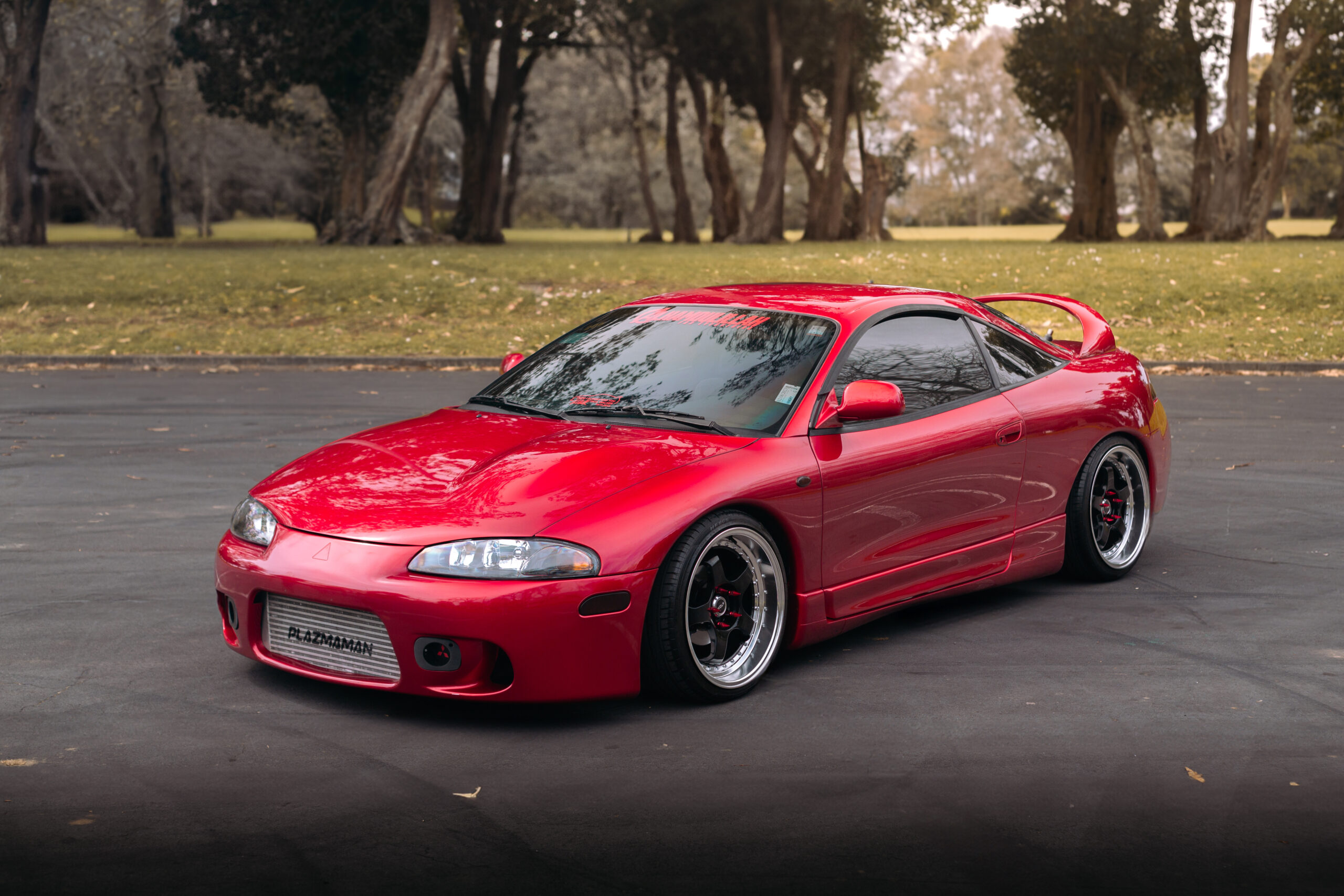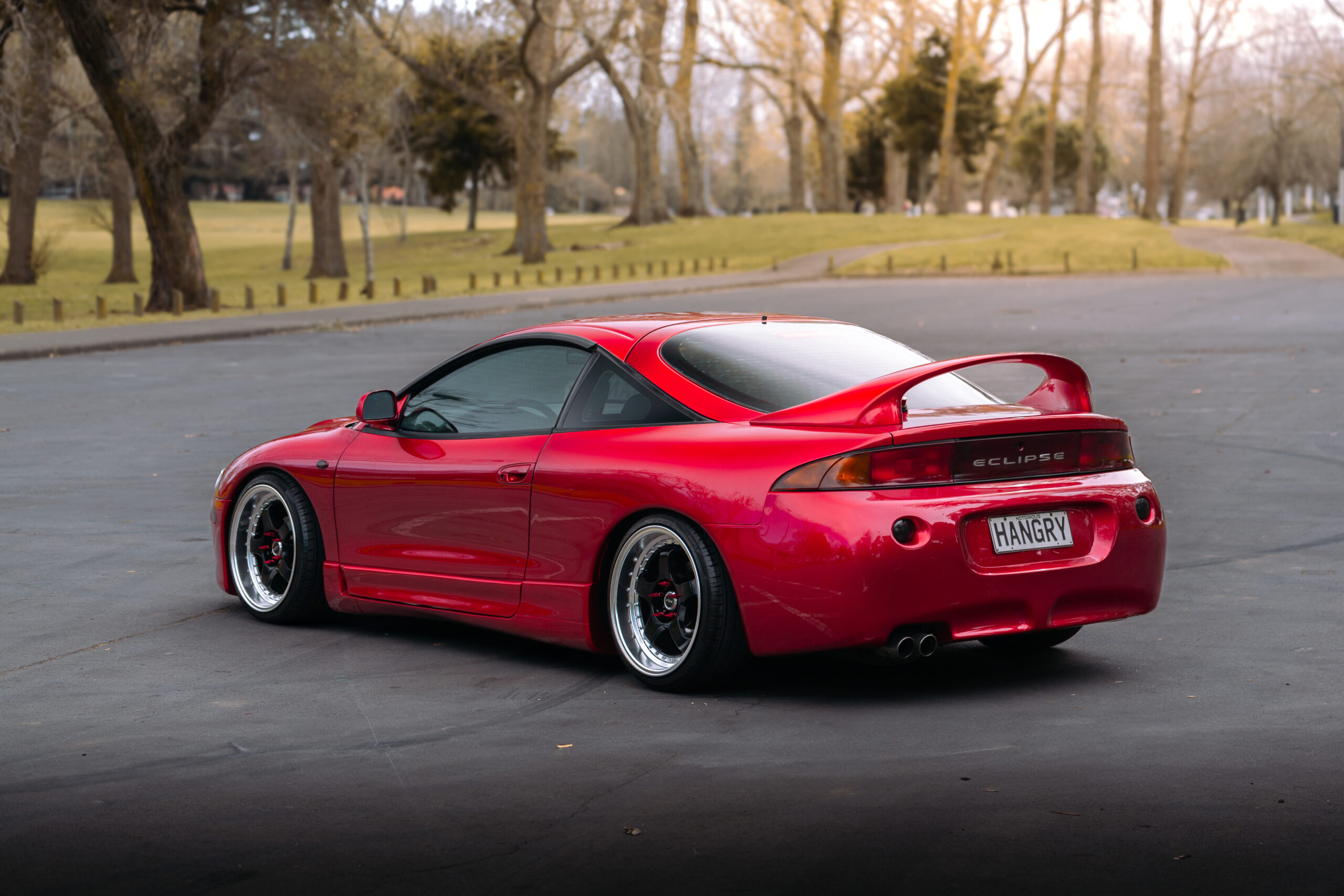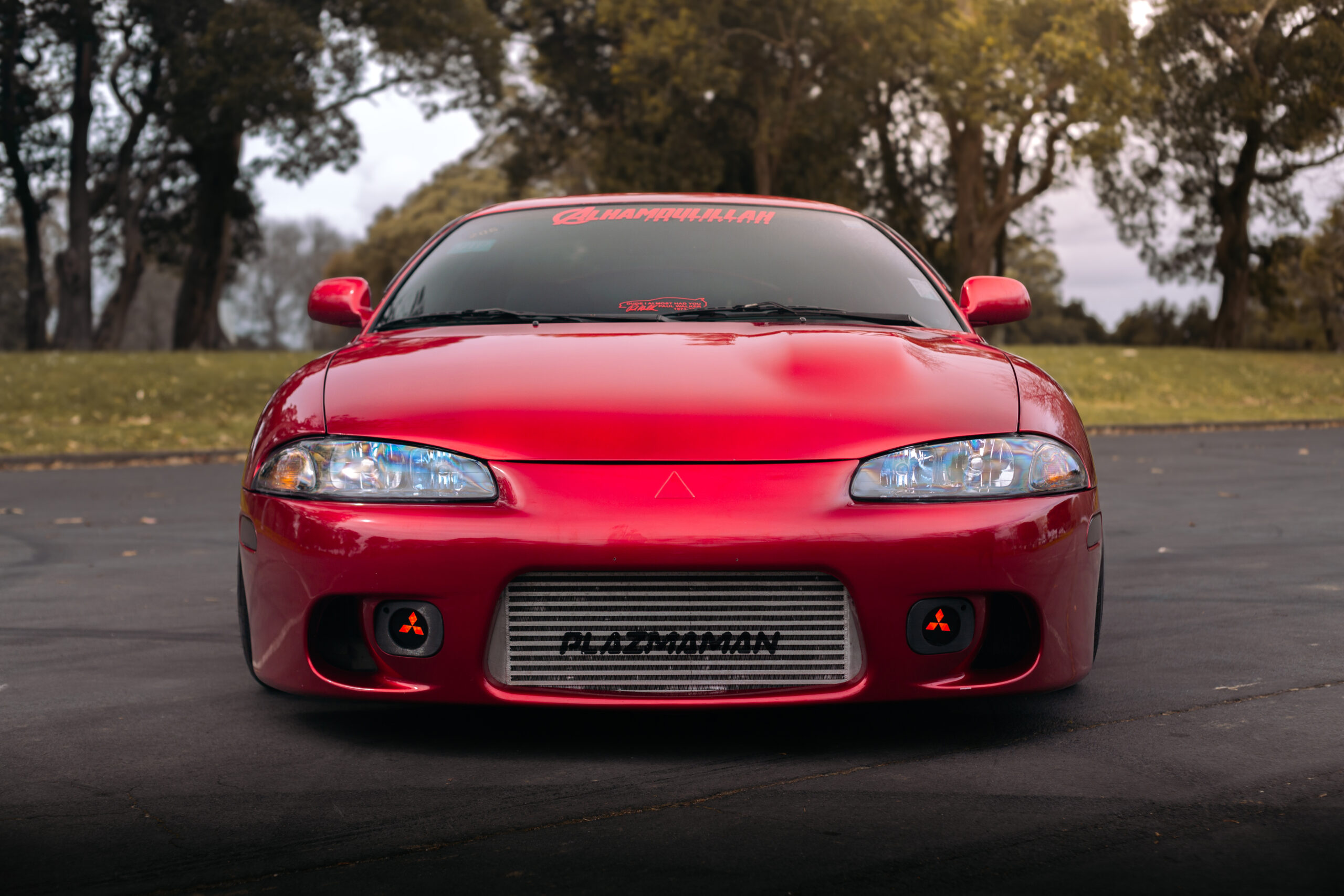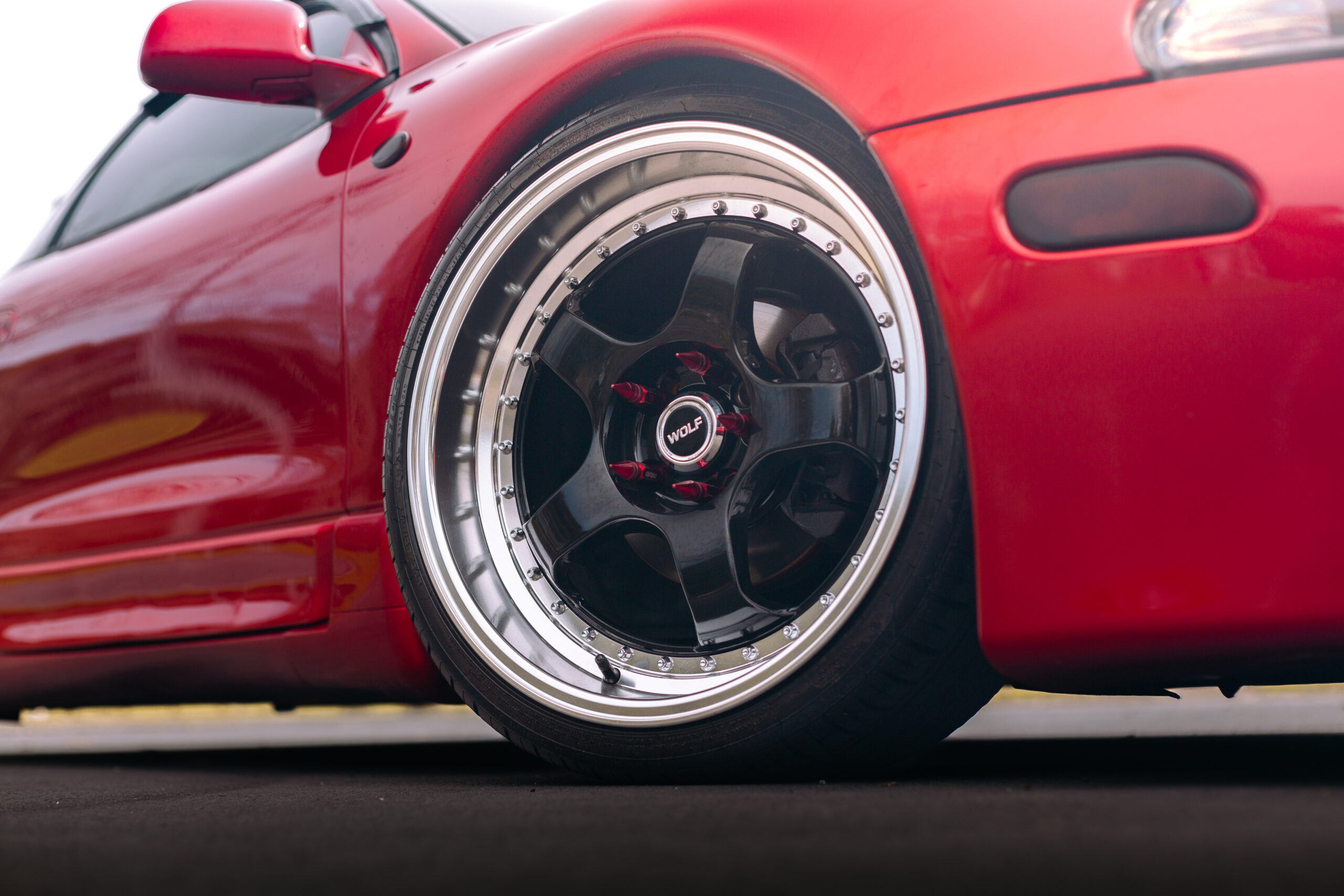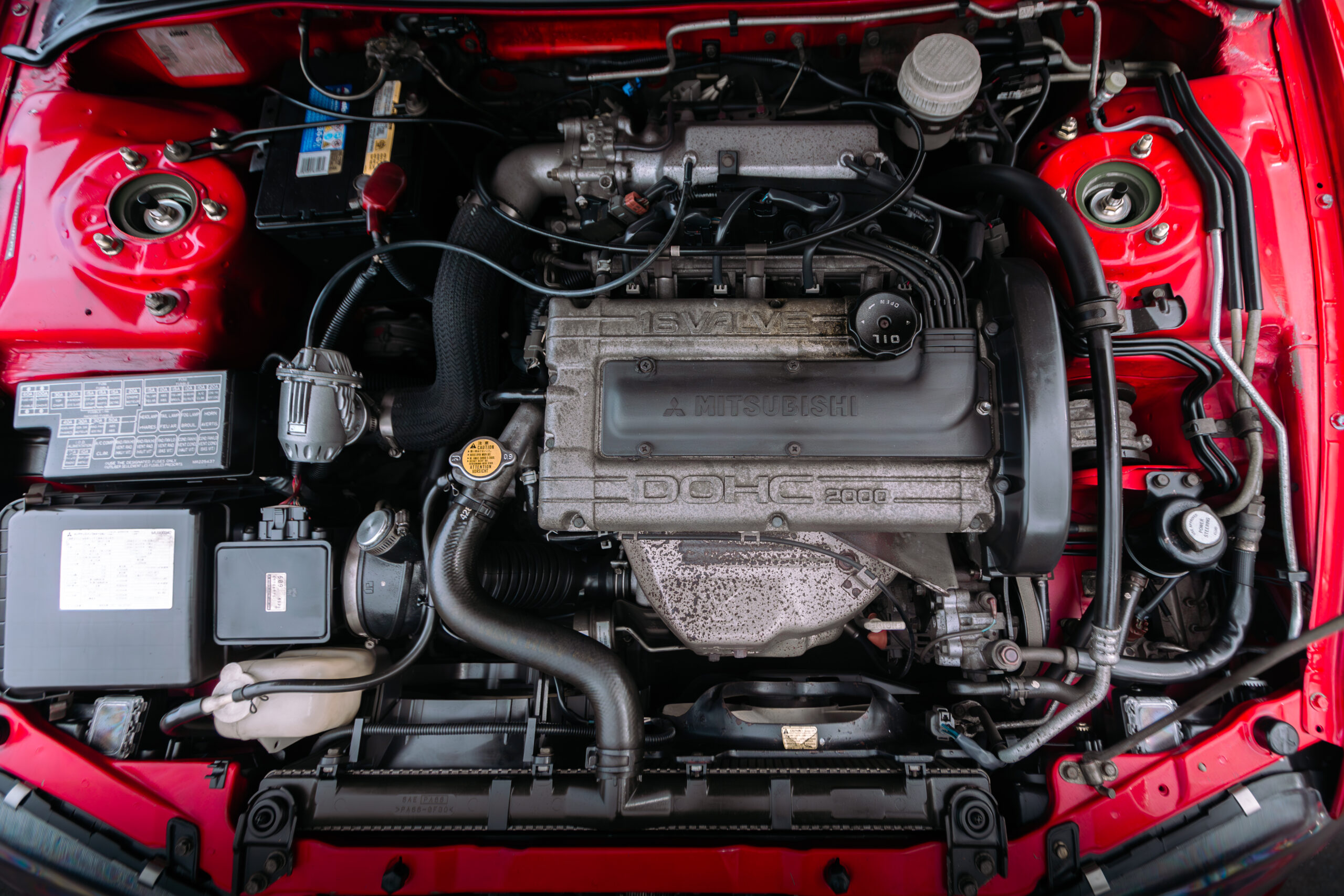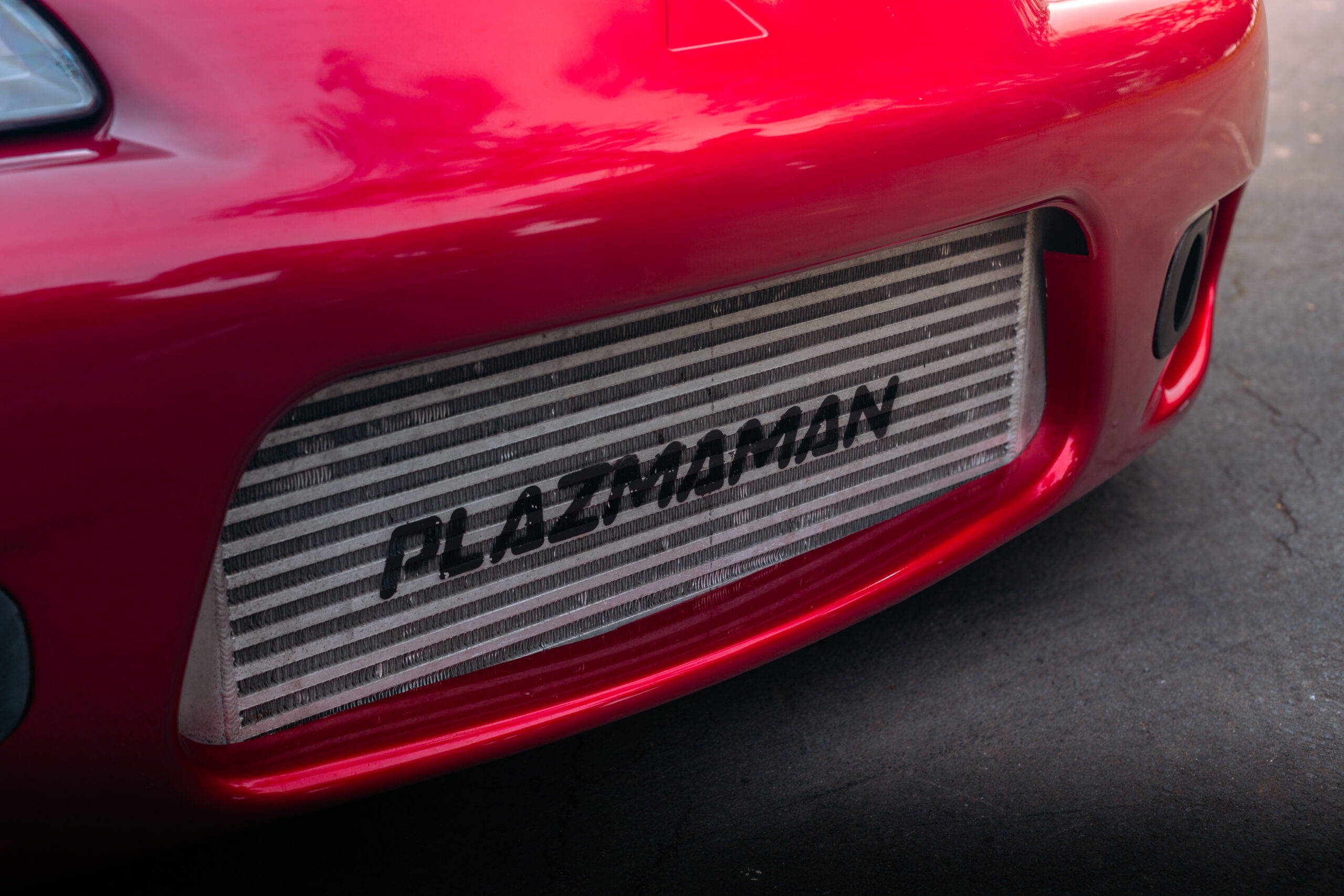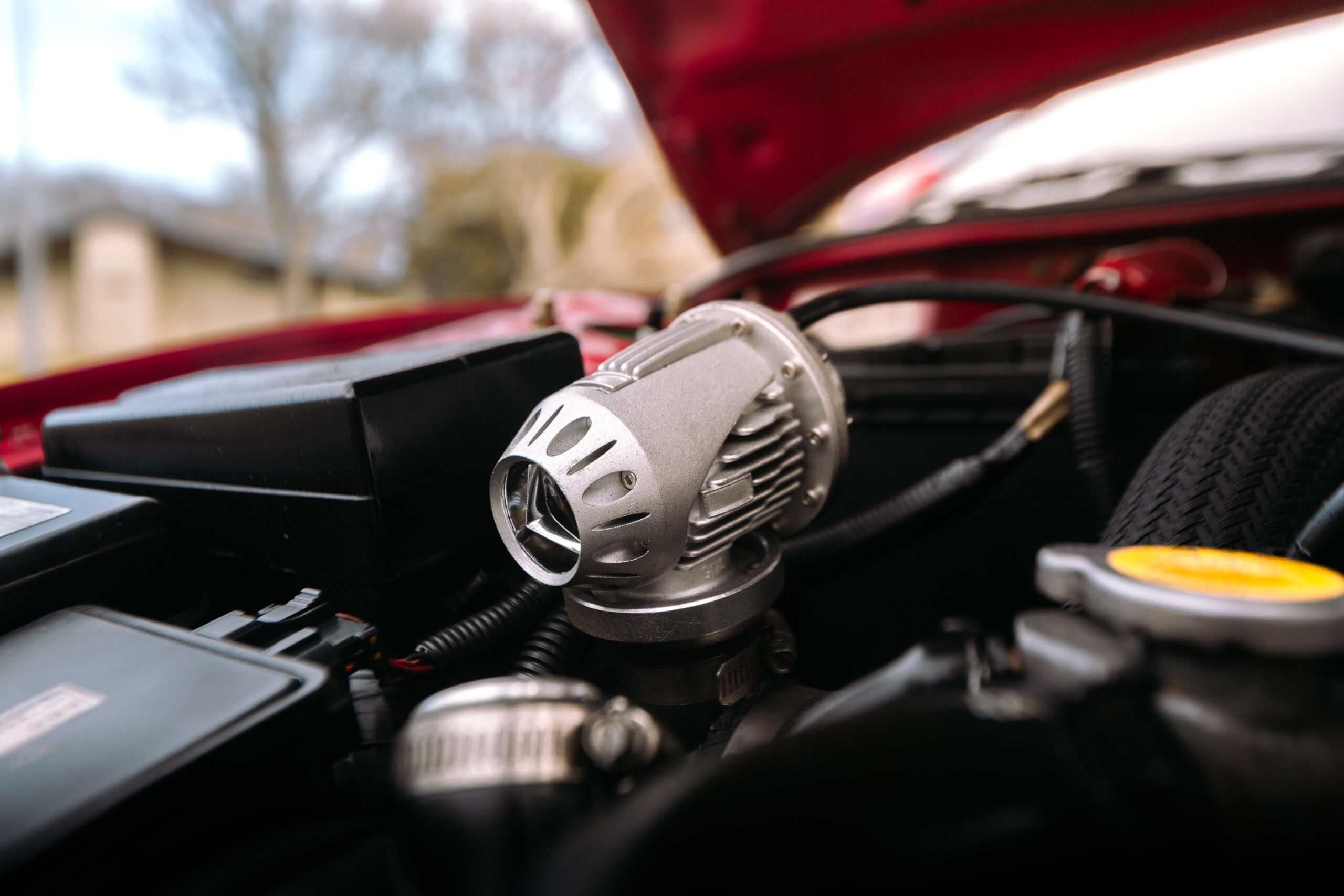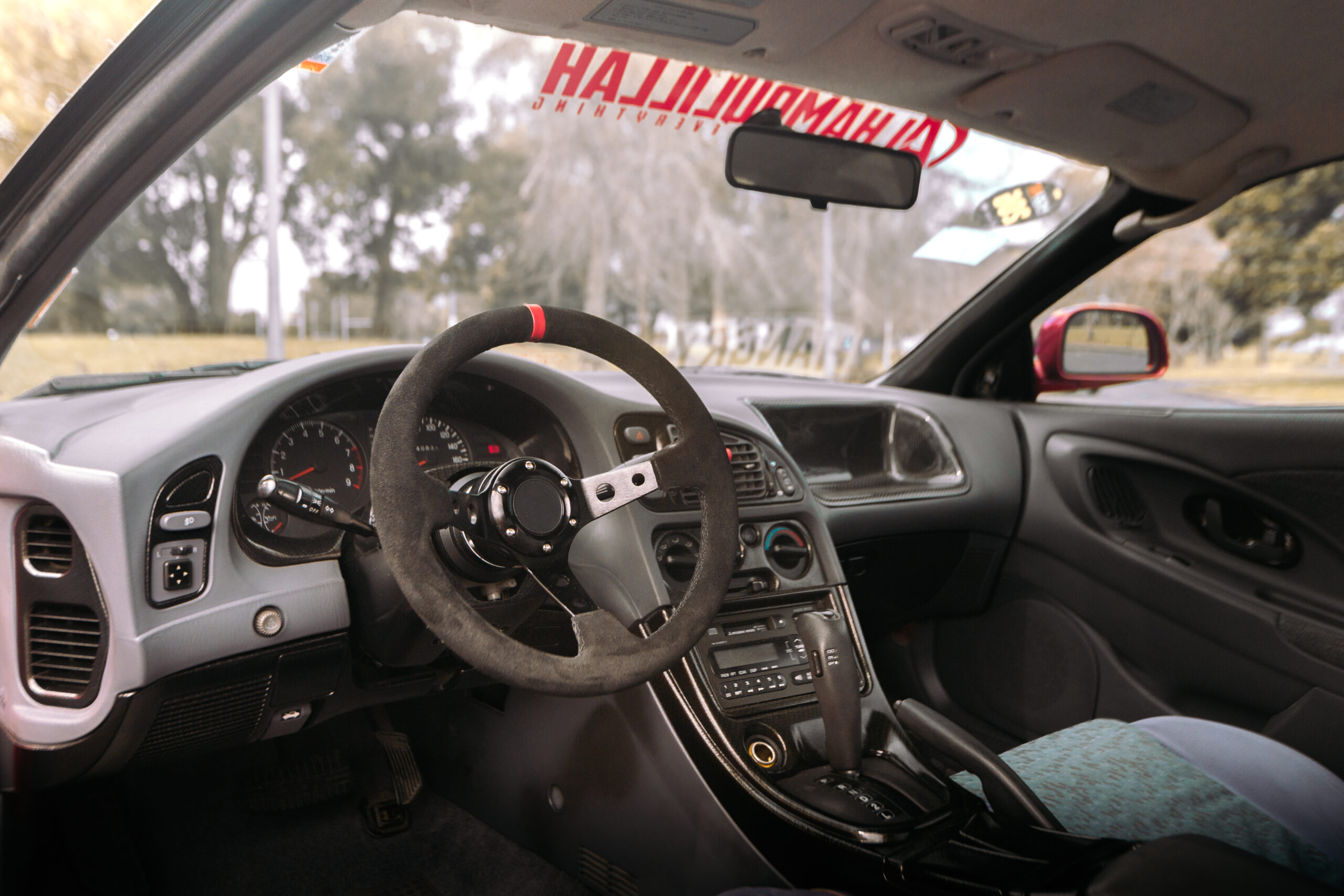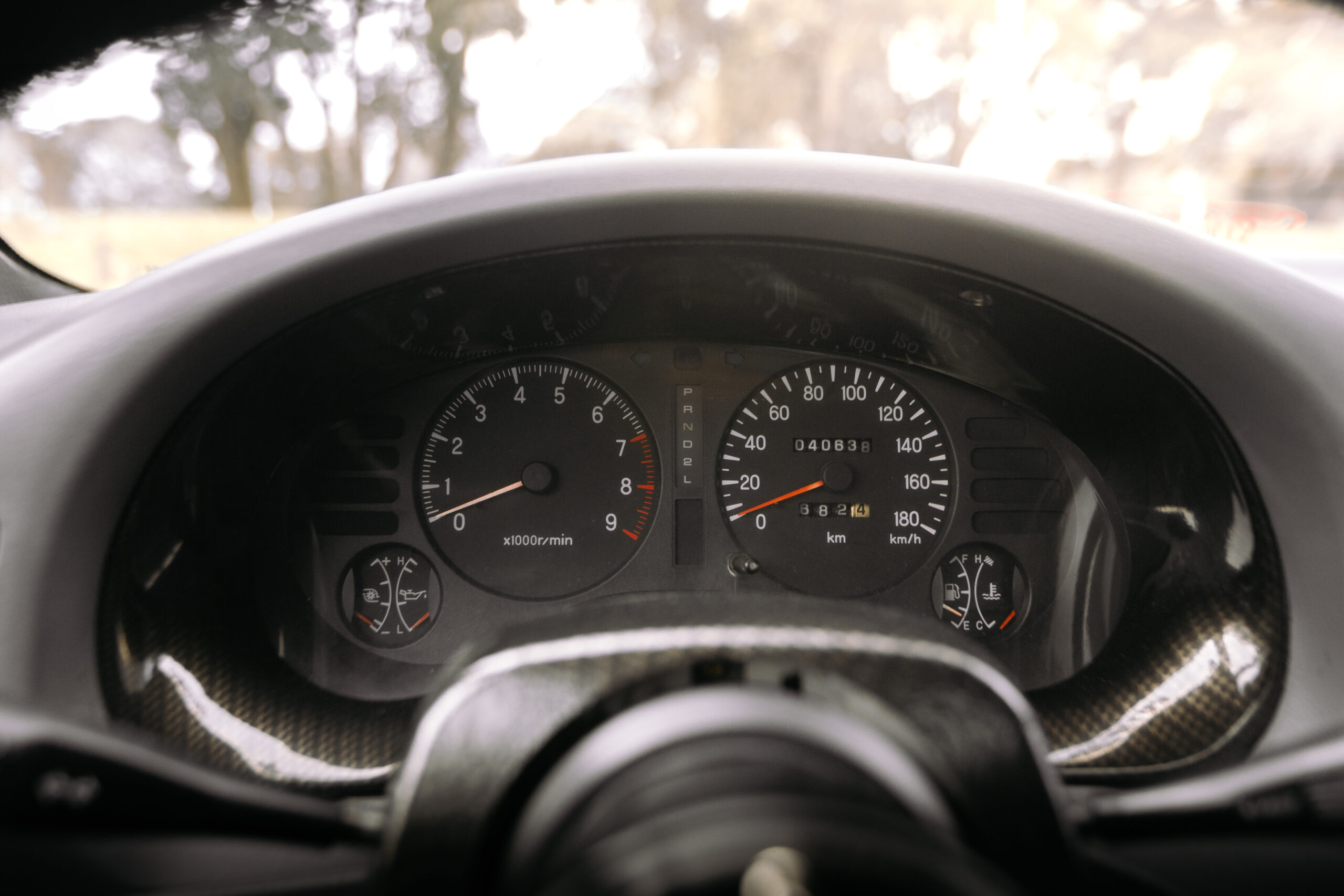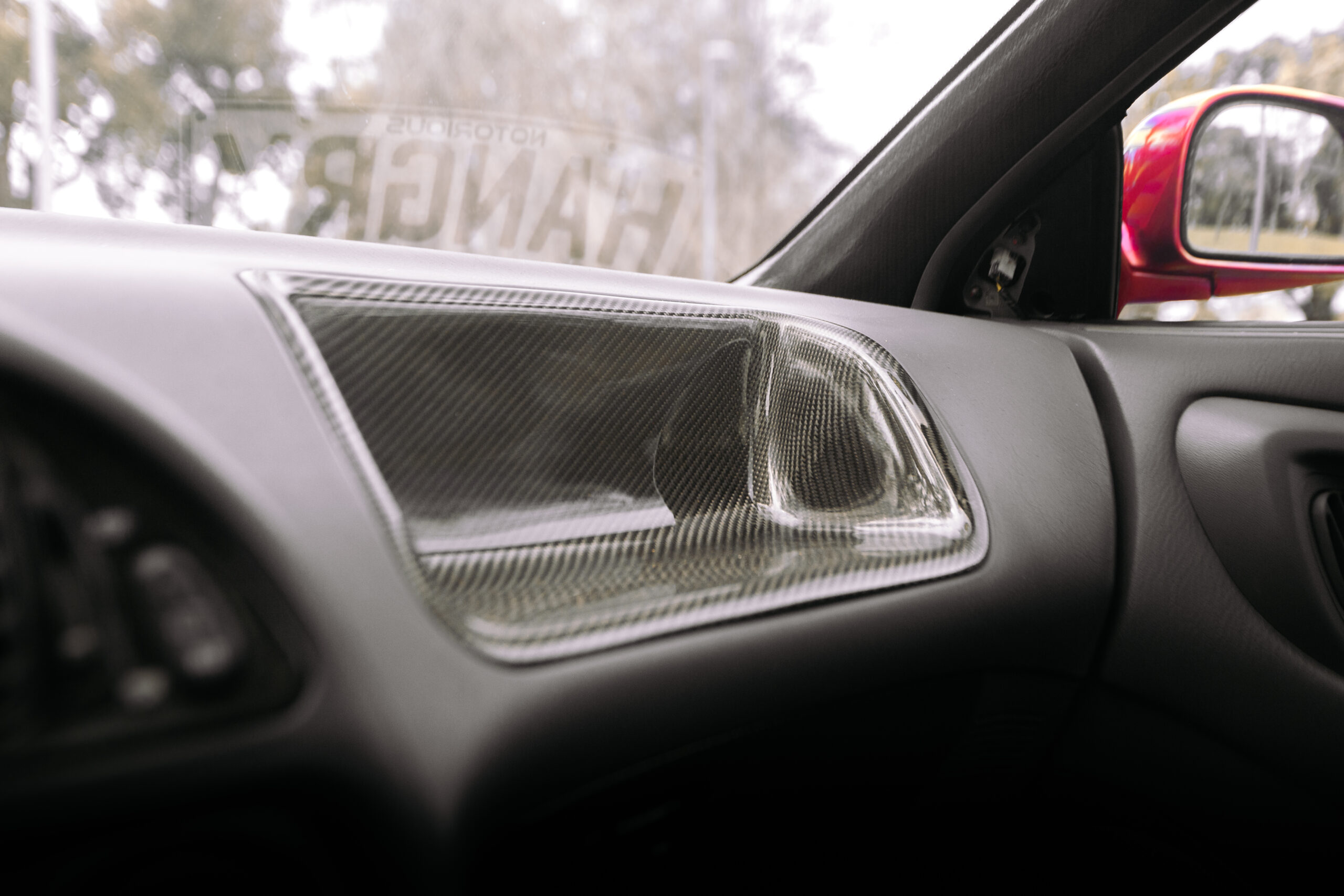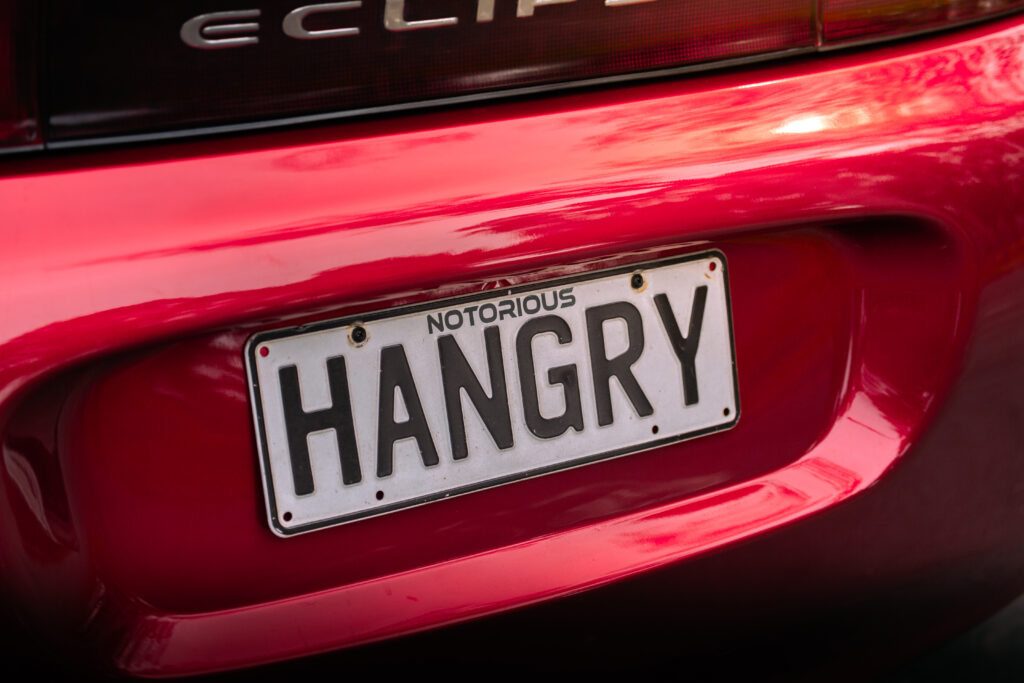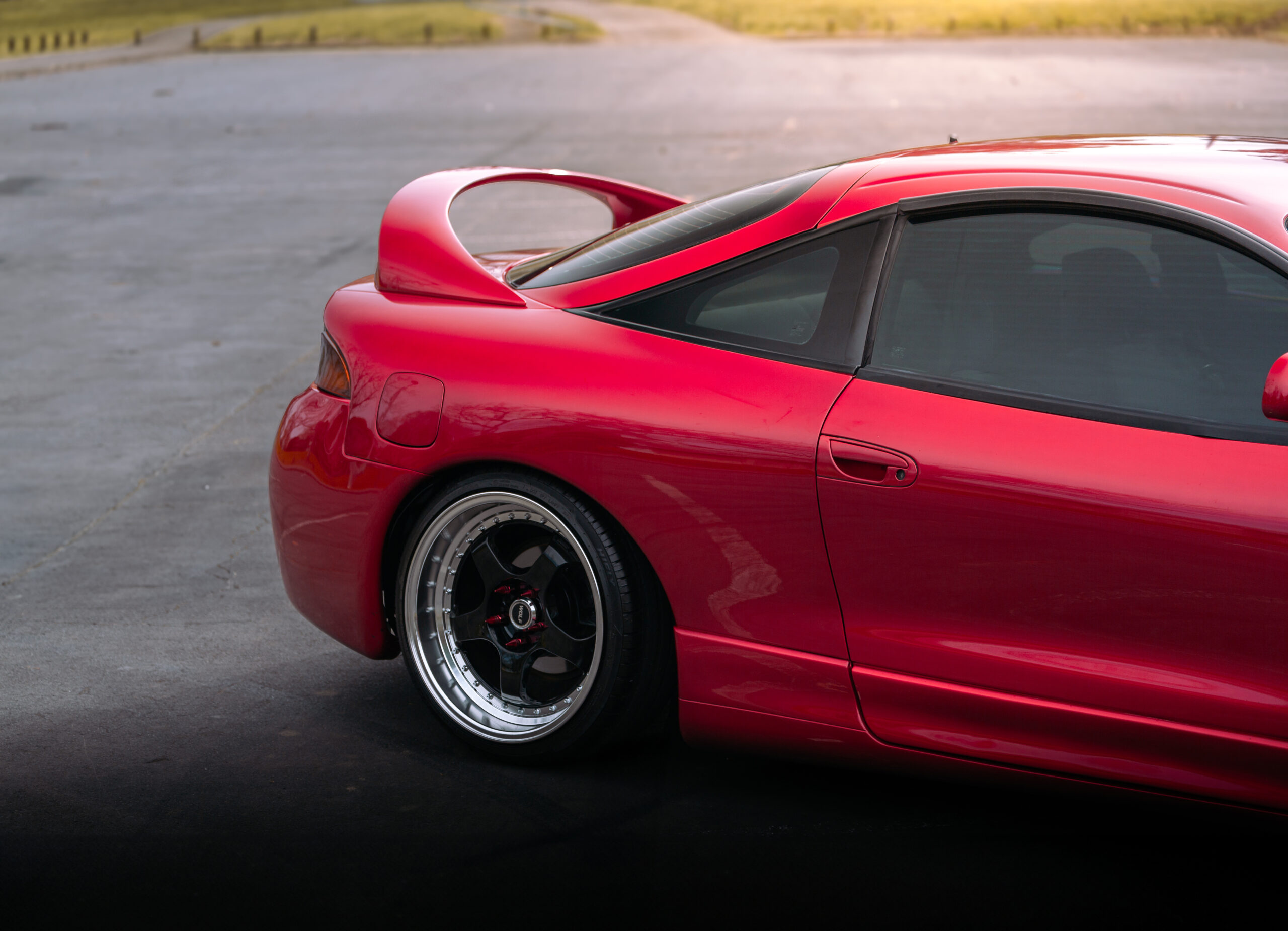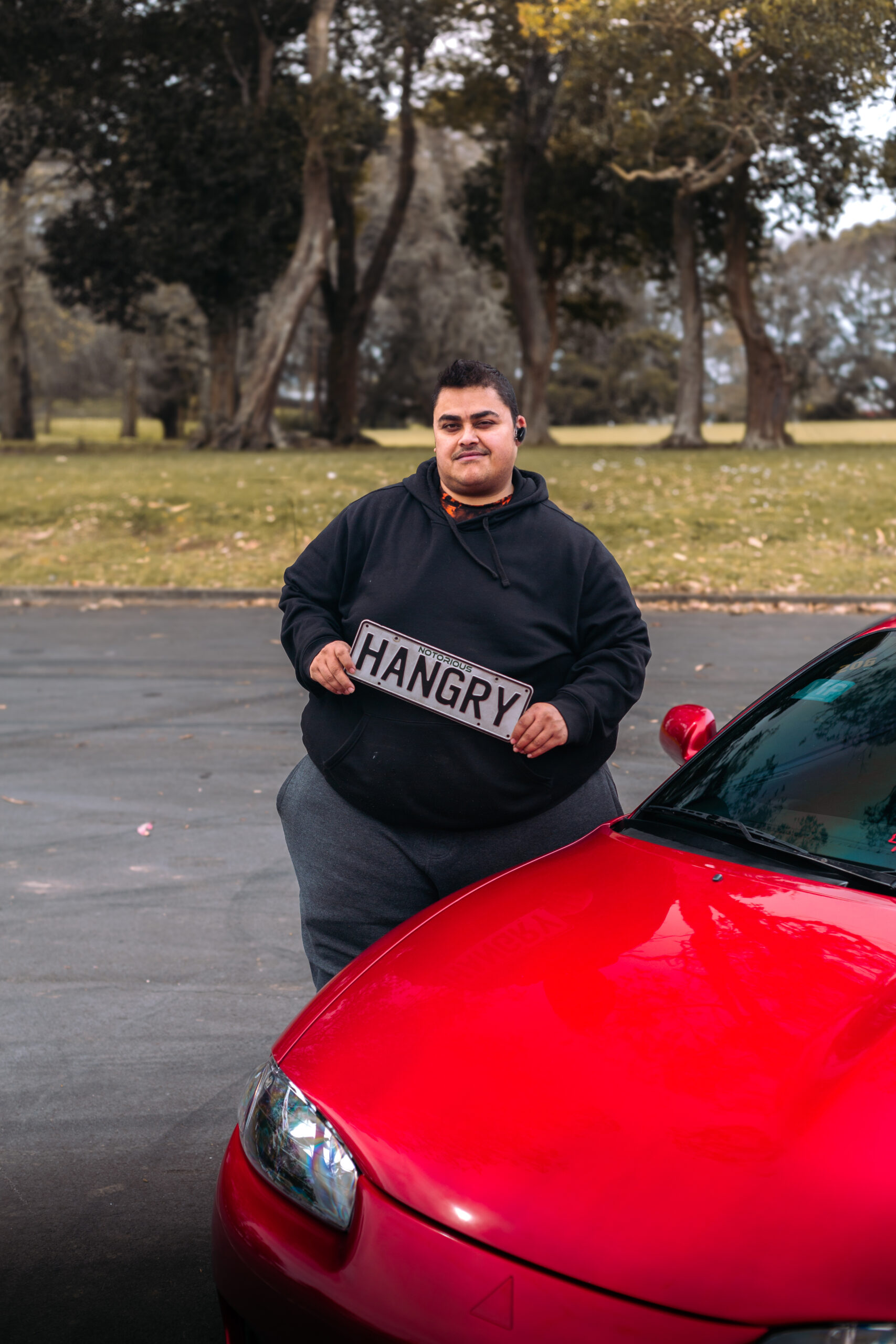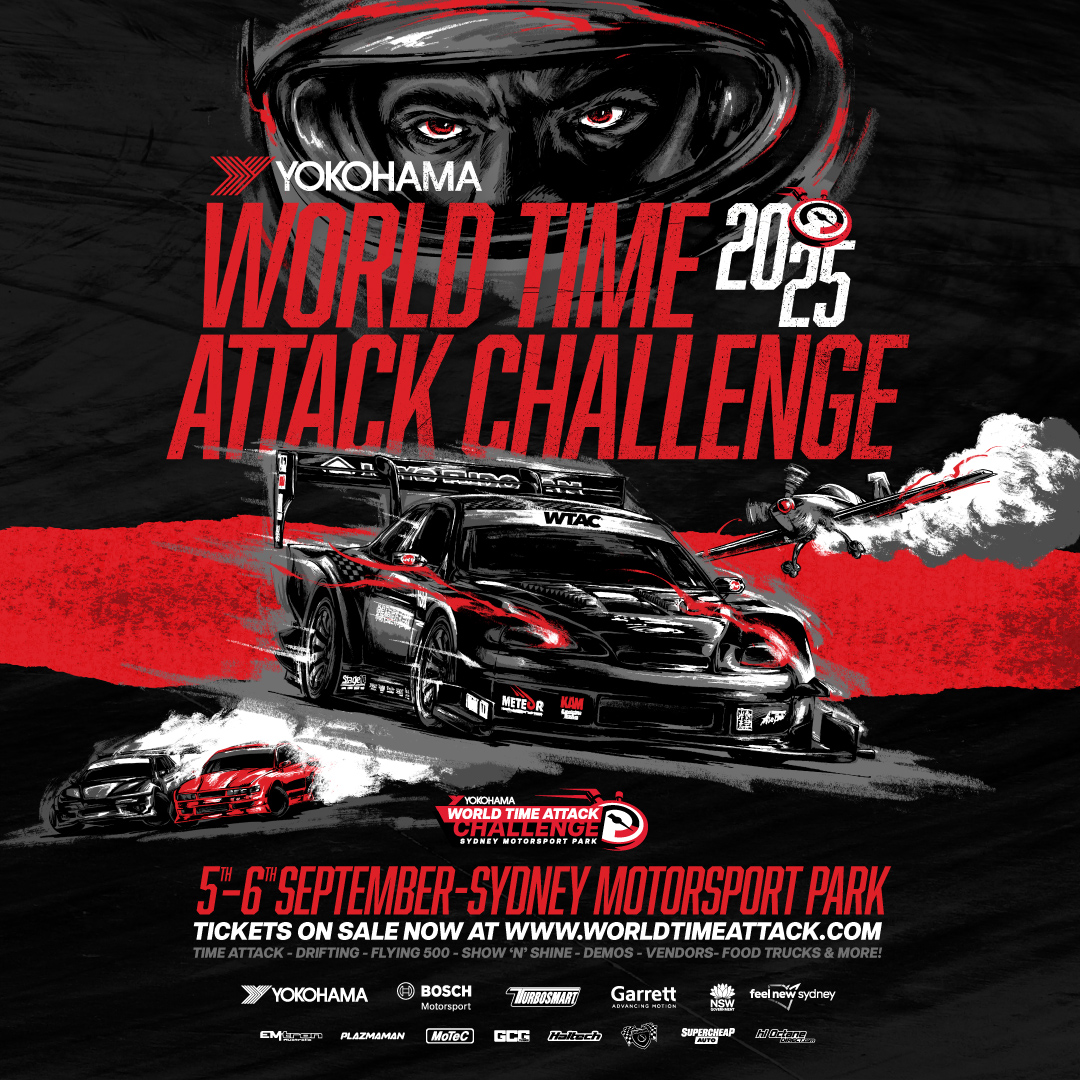Photos: Deven Solanki
NZPC: Hey Haroon, you’ve got something pretty special here — maybe even the only one like it in New Zealand! But before we dive into the details, how did you first get into modifying cars?
My dad is a mechanic, so I’ve been around cars and working on them since I was young, which eventually got me addicted. Since moving to NZ, back in the day there were a lot of Evo I, II, and III models around. Being around them and having a lot of mates who owned them sparked my passion. When I started watching drag racing, I began to like Evos even more. I was inspired by seeing other Evos racing on the strip and wanted to join them and build a fast car! My first car was a Mitsubishi Lancer GSR, which was a mostly-stock street car.
How did you come across this Mitsubishi Eclipse, and what motivated you to import it to New Zealand?
It had always been a dream of mine to own an Eclipse, as it is for most Fast and Furious fans. I attended the 2019 Rugby World Cup in Japan, which gave me the perfect opportunity to find some gems and make contacts to help import one to New Zealand, as a few Eclipses were available in Japan at the time.
So, here’s a question people are curious about! What was it like importing the Eclipse and getting it road-legal here in NZ? Was the process any different compared to other cars?
Honestly, the process was pretty much the same as for any other car. Since the Eclipses are now over 25 years old, getting them road-legal is a lot easier, as emission laws or special permits for left-hand drives are not required, as long as all the paperwork is in order. The hard part is actually sourcing an Eclipse in good condition and finding someone willing to assist with exporting it from the US.
It’s a bit harder from the States because you need to transfer the car into your name and then deregister it before sending it overseas — and this must be done in person. In Japan, however, it’s much simpler; you just need to send it over via an agent who handles the deregistering and other hard work. I was lucky enough to find a tidy Eclipse in Japan and completed the whole process through an agent.
How long did the entire compliance process take, and what was the most challenging part of it?
The entire process took only one month! It arrived in the country with underbody paint, so I had to get it sand-blasted for compliance. The compliance team needs to be able to thoroughly inspect the underbody, and leaving a coat of paint could raise concerns about rust or repairs. I also had to replace the rear brake rotors and pads and source a new cluster. Luckily, I found one that reads in kph instead of mph, but these were all just minor fixes.
What was it like sourcing parts for a model that was only manufactured in the States?
It was a bit difficult, but everything was available online, especially on eBay. It shares the same engine as the Evo I, II, and III, and a similar drivetrain to a mix of the RVR and Galant VR-4. For body parts, you have to import them from the States, or if you can find them on eBay, you’re paying a premium price. The parts themselves aren’t expensive, but the shipping costs are the real killer.
What’s your favourite feature of the Eclipse when you’re behind the wheel?
My favourite feature is how comfortable it is to drive, especially with the aircon and everything working — it’s the perfect weekend cruiser. One of my favourite things is when people always take a second look, thinking it’s a Supra. It gets a lot of attention because no one knows what it is until they take a closer look and realise it’s an Eclipse!
What do you think has prevented others from importing an Eclipse into NZ?
Getting it street-legal, finding a rust-free car, and trusting someone overseas to sell you a good car with the correct paperwork without inspecting it yourself are all challenges. Importing from America adds another level of difficulty to the process, and there are only a handful of Eclipses in Japan.
Tell us in as much detail as you can what it’s like to drive.
I love driving it. Being stock and not modified, it drives smoothly. Just getting used to driving from the left side is a challenge of its own, ha ha.
Do you have any future plans for the Eclipse?
Get airbag suspension installed with a NOS-style air tank first, then get a full custom interior done. After that, I’ll do some work on the engine bay to make it look better.
If you could go back in time and do one thing on the car over again, what would it be?
Nothing, it’s perfect.
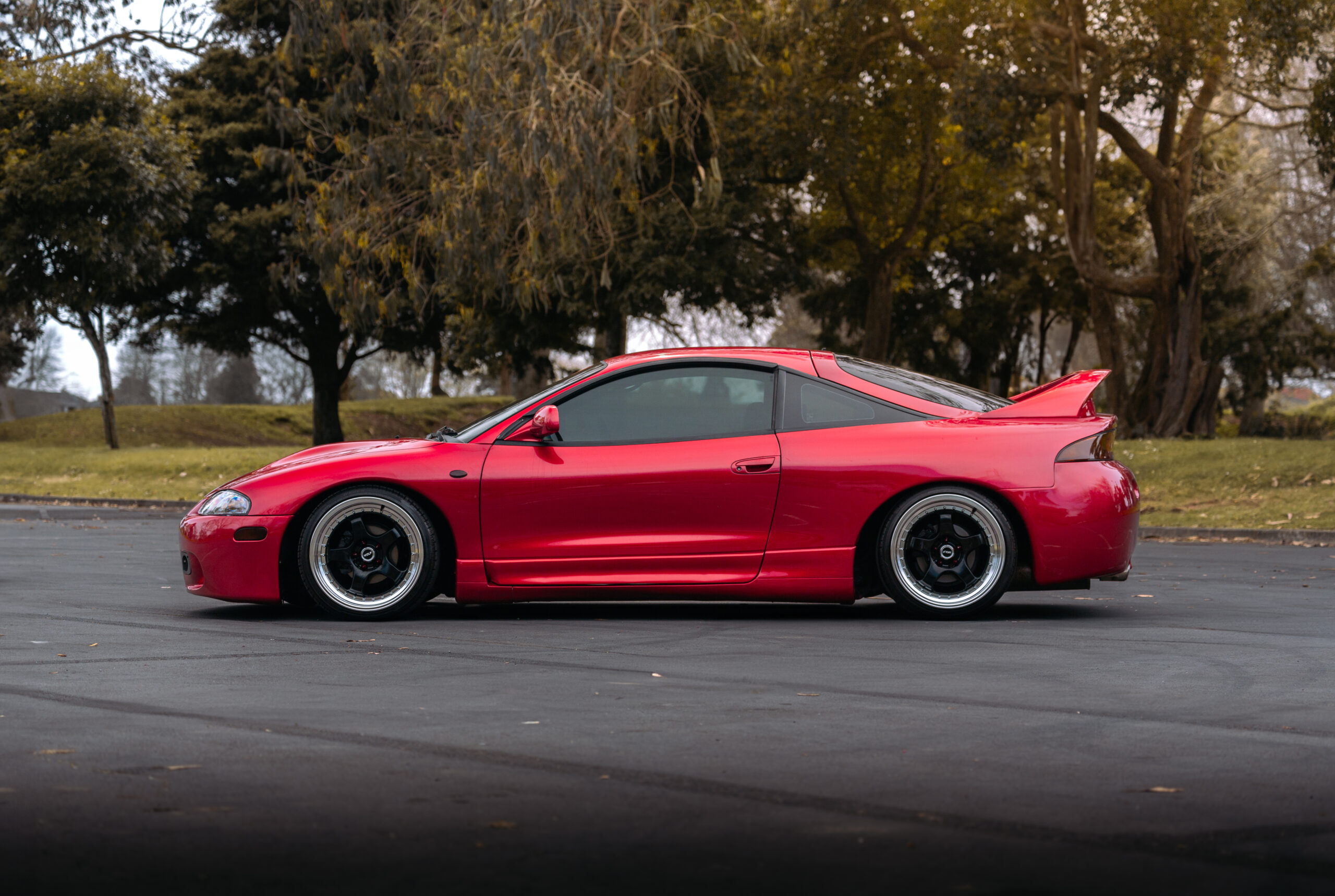
We’ve noticed you’re a bit of a Mitsubishi fanatic. What other cars do you have in your fleet?
A 10-second Evo I, #HNGRY; a 10-second RVR, #RKO (the fastest in New Zealand and the second fastest in the world; hopefully, next racing season I’ll be attempting to beat the world record). At the moment, I’m starting a new build: a 1992 Mitsubishi Mirage Cyborg 4WD, #2HNGRY, with a goal of 1000hp as a road-legal drag car.
Thanks for sharing, Haroon. You’ve got yourself a unique gem!
1996 Mitsubishi Eclipse GST (D32A)
Engine: 4G63, 2000cc four-cylinder, HKS BOV, Plazmaman intercooler
Driveline: Four-speed automatic
Interior: Carbon-fibre surrounds, carbon-fibre pedals
Exterior: Crystal Soul Red paint
Wheels/tyres: 18×9-inch (+35) Wolf S1P, 205/35R18 Hifly HF805 Challenger
Suspension: Tein Flex Z adjustable coilovers
Brakes: Factory
Power: 220kW
Fuel type: BP Ultimate 98
Tuner: Autech
Name: Haroon Khan
Age: 33
Location: Rewa
Occupation: Truck Driver
Build time: Two years
Length of ownership: Two years
Thanks: Mum and Dad, my wife Samma, AJ Kumar, Ash, Iftikar, Sharukh, Atif, Alen, Shah, Hamish, Ziggy, Elvish and Shameel Lal
_________________________________________________________________________________________________
This article originally appeared in New Zealand Performance Car issue 311





